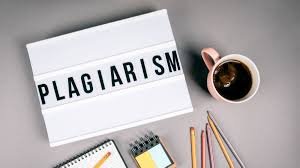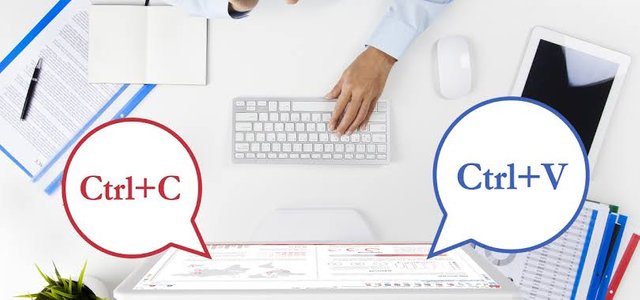Assalam o Alaikum,
This is Muhammad Mujtaba. As I have completed my achievement 2 task so now I am proceeding towards achievement 3 task
Plagiarism
“To copy someone’s idea or content and using it without giving principle credit to that person is known as plagiarism". But by this definition its severity cannot be defined. To understand what it actually means there is another definition, “ lying after stealing someone’s work and make profit by using it is known as plagiarism”. So it can easily be inferred that this is an act of fraud.
But from this a question arises that are really words can be stolen?
So the answer is Yes
“According to U.S. law, the answer is yes. The expression of original ideas is considered intellectual property and is protected by copyright laws, just like original inventions. Almost all forms of expression fall under copyright protection as long as they are recorded in some way (such as a book or a computer file).”
Source
Forms of Plagiarism
Let us discuss some forms of plagiarism,
Verbatim (word for word) quotation without clear acknowledgement
Quotations must always be identified as such by the use of either quotation marks or indentation, and with full referencing of the sources cited. It must always be apparent to the reader which parts are your own independent work and where you have drawn on someone else’s ideas and language.
Cutting and pasting from the Internet without clear acknowledgement
Information derived from the Internet must be adequately referenced and included in the bibliography. It is important to evaluate carefully all material found on the Internet, as it is less likely to have been through the same process of scholarly peer review as published sources.
Paraphrasing
Paraphrasing the work of others by altering a few words and changing their order, or by closely following the structure of their argument, is plagiarism if you do not give due acknowledgement to the author whose work you are using.
A passing reference to the original author in your own text may not be enough; you must ensure that you do not create the misleading impression that the paraphrased wording or the sequence of ideas are entirely your own. It is better to write a brief summary of the author’s overall argument in your own words, indicating that you are doing so, than to paraphrase particular sections of his or her writing. This will ensure you have a genuine grasp of the argument and will avoid the difficulty of paraphrasing without plagiarising. You must also properly attribute all material you derive from lectures.
Collusion
This can involve unauthorised collaboration between students, failure to attribute assistance received, or failure to follow precisely regulations on group work projects. It is your responsibility to ensure that you are entirely clear about the extent of collaboration permitted, and which parts of the work must be your own.
Inaccurate citation
It is important to cite correctly, according to the conventions of your discipline. As well as listing your sources (i.e. in a bibliography), you must indicate, using a footnote or an in-text reference, where a quoted passage comes from. Additionally, you should not include anything in your references or bibliography that you have not actually consulted. If you cannot gain access to a primary source you must make it clear in your citation that your knowledge of the work has been derived from a secondary text (for example, Bradshaw, D. Title of Book, discussed in Wilson, E., Title of Book (London, 2004), p. 189).
Failure to acknowledge assistance
You must clearly acknowledge all assistance which has contributed to the production of your work, such as advice from fellow students, laboratory technicians, and other external sources. This need not apply to the assistance provided by your tutor or supervisor, or to ordinary proofreading, but it is necessary to acknowledge other guidance which leads to substantive changes of content or approach.
Use of material written by professional agencies or other persons
You should neither make use of professional agencies in the production of your work nor submit material which has been written for you even with the consent of the person who has written it. It is vital to your intellectual training and development that you should undertake the research process unaided. Under Statute XI on University Discipline, all members of the University are prohibited from providing material that could be submitted in an examination by students at this University or elsewhere.
Auto-plagiarism
You must not submit work for assessment that you have already submitted (partially or in full), either for your current course or for another qualification of this, or any other, university, unless this is specifically provided for in the special regulations for your course. Where earlier work by you is citable, ie. it has already been published, you must reference it clearly. Identical pieces of work submitted concurrently will also be considered to be auto-plagiarism.
Source
Students
Mostly students are familiar with plagiarism. Some (but not all) examples follow:
Quoting one or more passages from a source and failing to cite (give credit to) the original author(s)
Paraphrasing one or more passages from an outside source and failing to cite (give credit) the original author(s)
Purchasing an assignment and submitting it as the student’s own work
Having another person write the assignment for the student and then submitting it as the student’s original work
Copying and pasting outside material into a document without giving proper credit to the original author(s)
Keyboarding information from an outside source and submitting it as original work OR failing to give credit to the original author(s)
Plagiarism can be further categorized into blatant plagiarism and accidental plagiarism.
Some (but not all) examples of blatant plagiarism include:
1. Willfully and blatantly copying sections of another’s work and submitting it as the student’s own
2. Purchasing the work from another and submitting it as original work
3. Using a work that has been previously submitted for a grade in another class without asking consent from the current instructor
As I am acknowledged about the whole concept of Plagiarism, I will try my best to eliminate it from my life by giving all the credit to the real author of the content.
"I have read and understood the Steemit Etiquette on Steemit Community and will do my best to embrace them"
Thank you for reading it so far. I hope you all like it. Please don’t forget to up vote this post.😊
If you want to know me,
Achievement 1 Click Here
For further
Achievement 2 Click Here
Regards,
Newcomers’ Community.



